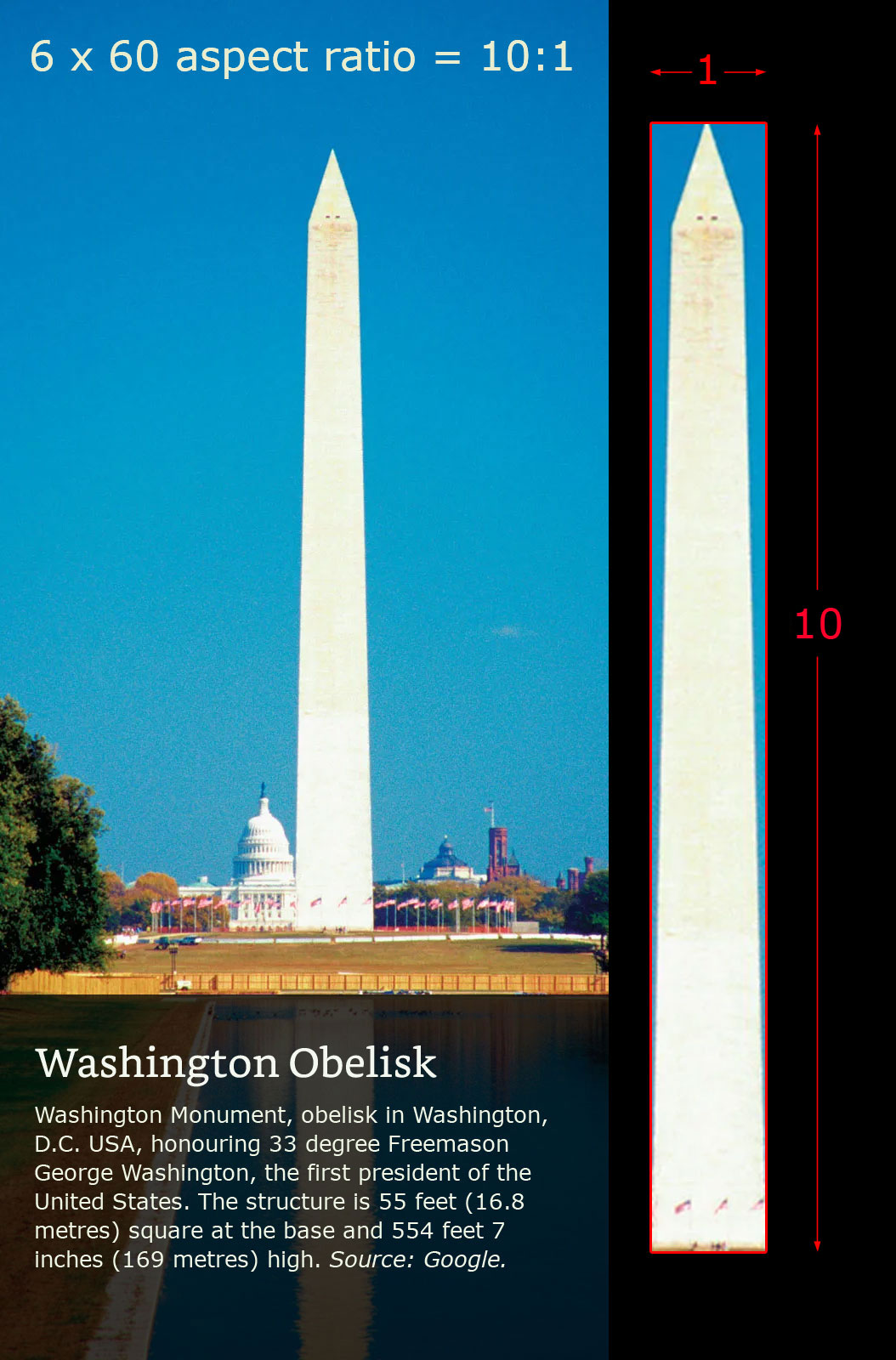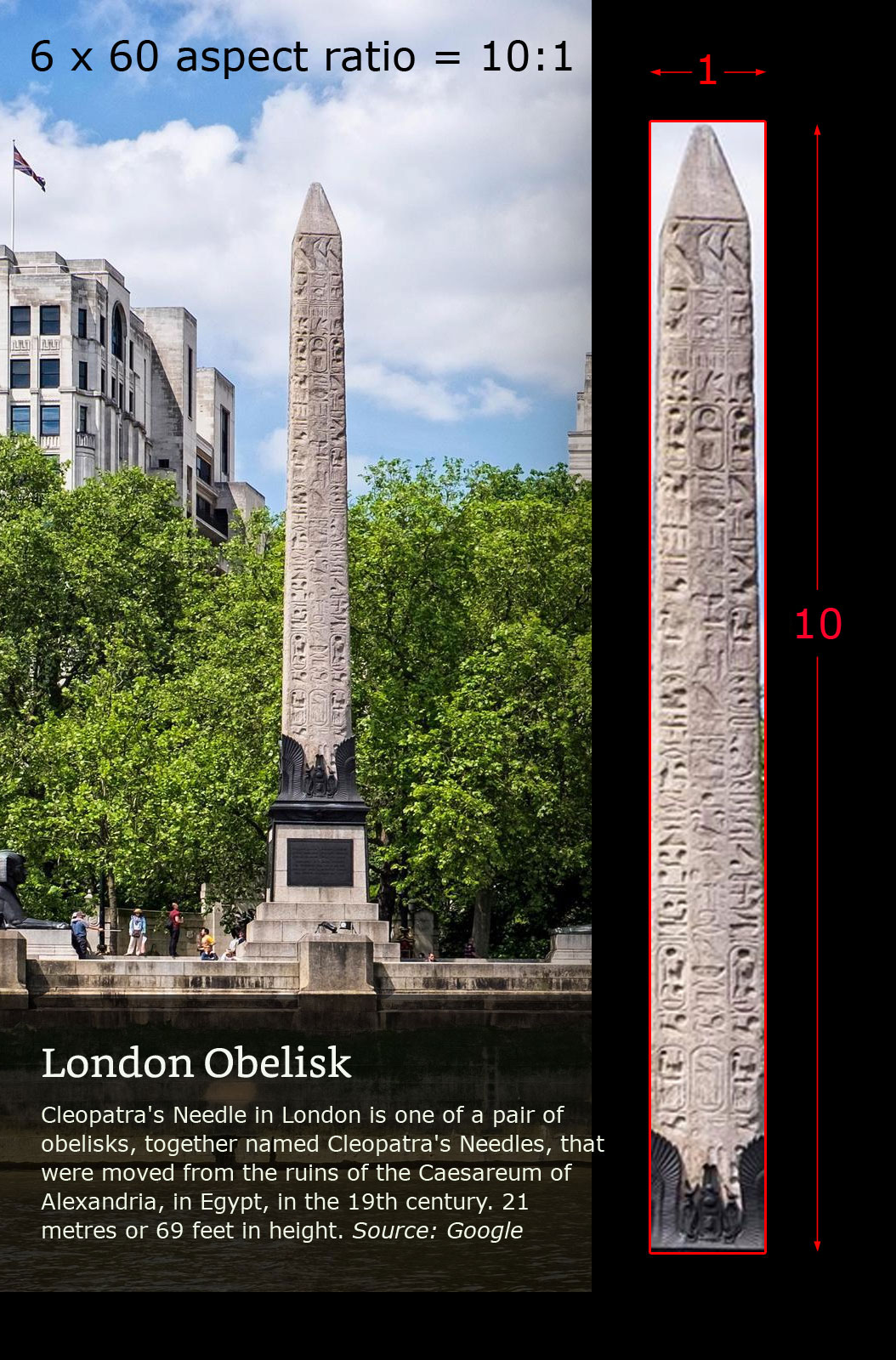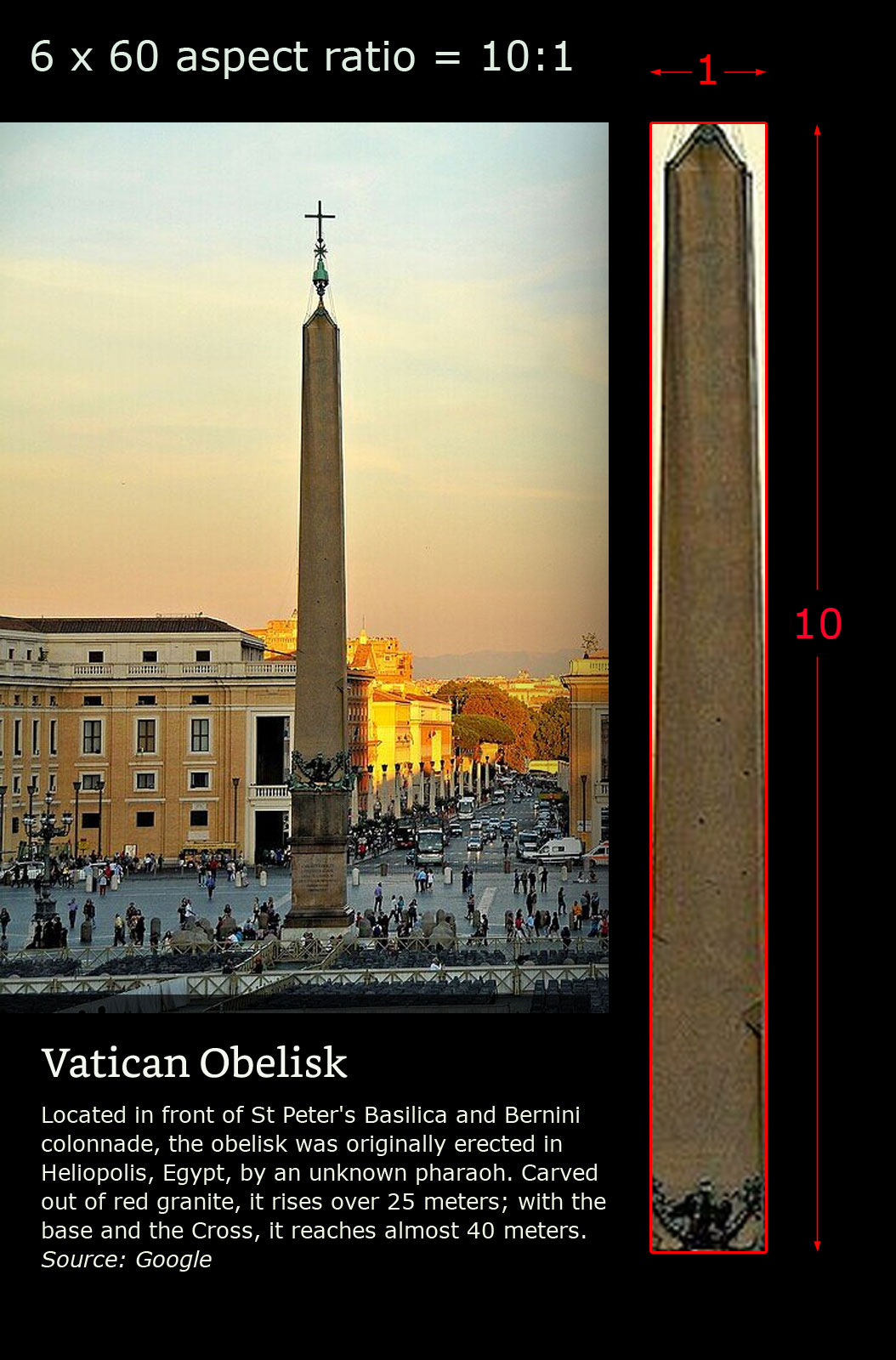Revelation of Jesus Christ
From the KJV 1611 with Strong's Concordance

What was the image in the plain of Dura?
Nebuchadnezzar the king made an image of gold, whose height was threescore cubits, and the breadth thereof six cubits: he set it up in the plain of Dura, in the province of Babylon. Daniel: Chapter 3:1
Clue: 1 (Dimensions)
Besides being told it was an image of gold we are given very few clues other than it's height being sixty (threescore) cubits and breadth (it's width) being six cubits.
A cubit can vary depending on the nation and whether it's a standard cubit or a royal cubit so on to the aspect ratio.
60 x 6 would give the image a 10:1 aspect ratio. I set up a canvas in Photoshop with the dimensions 600px (Height) x 60px (width). Viewing the proportions of this ratio it appeared unlikely that the image set up in Dura would have represented that of human form. There is a common monument that features constantly throughout time that does fit the 10:1 ratio and that is the obelisk.
It does not prove that this is what Nebuchadnezzar had set up in Dura though given that obelisks have been erected all over the earth, and adopted by multi nations throughout the ages it would make the obelisk a serious contender.
Obelisks

Washington Obelisk

London Obelisk

Vatican Obelisk
Clue: 2 (The definition of 'image' and 'Dura')
The word 'image' is H6755 tselem {tseh'-lem} of Chaldaean origin meaning an idolatrous figure which corresponds to the Hebrew word H6754 also tselem meaning to shade; a phantom, that is, (figuratively) illusion, resemblance; hence a representative figure, especially an idol.
An obelisk can be used as a sun dial casting a shadow like a hand on a clock.
Dura H1757 means circle, so if the obelisk is placed in the center of a circle then markers can be created to divide up the day light into half, quarters, eighths an so on making a giant sky clock/calendar and also a tool for tracking the stars and the sun, moon, solstices, equinoxes and eclipses.

Sun/Sky clock at the Vatican in Rome.
Clue: 3 (Location - a plain)
For the sun wheel to work accurately the location would need to be flat (like the face of a clock) and the word for plain corresponds to H1237 biq' ah {bik-aw'} meaning properly a split, that is, a wide level valley between mountains.
Clue: 4 (Ruling out a babylonian god)
There are certain Jews whom thou hast set over the affairs of the province of Babylon, Shadrach, Meshach, and Abednego; these men, O king, have not regarded thee: they serve not thy gods, nor worship the golden image which thou hast set up. Daniel: Chapter 3:12.
Clue: 5 (Who changes the times and the seasons?)
When the king's dream is revealed to Daniel in the night vision the very first thing he does is bless God and acknowledges that "He changes the times and the seasons". This is an interesting statement to begin the blessing suggesting that there may have been disputes during Daniel's time of captivity over times and seasons, and the revolution of a yearly cycle. The yearly calendar has continuously been contested throughout the ages. The Israelites from the time of the exodus out of Egypt have used a 13 month lunar calendar with the yearly cycle beginning in spring when life is renewed. Today the Roman solar (sun) calendar is now on it's third revised edition, and is the most widely used with its yearly cycle beginning and ending in winter based around the solstice, and the birth and death of the sun with many of it's months and days of the week named after their gods.
Regardless of what devices men invent, God revealed to Daniel that it is He that changes the times and seasons.
Every good gift, and every perfect gift is from above, & cometh down from the Father of lights, with whom is no variableness, neither shadow of turning.
James 1:17.